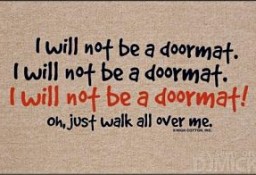In my previous blog on this topic, I asked ‘Are your career goals organized around solving problems or creating what you want?” Whether you are pursuing a short term goal, like getting a new job in the next 90 days, or going after a longer term goal, such as changing your career completely—an important lesson to remember is this: you don’t get there all at once!
You build. You plan certain steps, and then you take certain actions. You start with something workable, and then you begin to develop it.
However, many people will simply react to their current circumstances. If they think their employer is downsizing, merging with another company, or going bankrupt, they will start looking for another job because losing a job is a problem to be solved. They do what they think they should do, i.e. go to job boards, look for postings, and apply online for their resume. They don’t usually think much about how the process works, why it functions they way it does, and so on.
Then, when they don’t get any callbacks for interviews, they start to panic and think something is wrong with them: “my resume is no good, I don’t have enough experience for that job, I’m getting too old, I don’t have enough education, I live in the wrong part of the country.” They start to blame themselves instead of understanding the dynamics of supply & demand at work in the job market and how job boards relate to those dynamics.
Problem solving is about reacting to circumstances.
Creating is about resolving the tension between where you want to be and where you are now. For example, if you want a new job, you can start by picking a job target. What is the job title that you are going to package/position yourself for? Is it the same one you have now, or slightly different, or very different? Where do you want to work? Do you have a list of 10-20 preferred employers? Getting clarity about where you want to be is a crucial step in creating your next job.
Next, make a list of where you’re at now. What personal strengths and professional assets do you have that will help you create your next opportunity. Do you have an up-to-date resume? Do you know how to use LinkedIn for job search? What about offline—do you know how to approach recruiters and agencies? Or prospect for opportunities through professional associations? Or network for referrals through your personal & professional contacts?
Are you introspective and like to plan, strategize and think? How can you leverage these strengths into your job search? Or, are you extroverted and like to meet with people and take actions? Do you know how to curb your impulsiveness and optimize your time & energy to get the biggest impact for your job search?
Creating your next job opportunity takes a little practice.
Start by using your strengths, your assets, and your preferences for how you like to do things. Taking actions that are based on your natural inclinations will build your confidence, something you need a lot of in a job search!
Not all of your actions will be efficient or effective but some will move you closer to your goal of a new job. You begin to get a clearer picture of what that job might look like. You begin to see where you are in current reality. Then, your mind begins to invent new ways to create that outcome.
This is the key to true job search, resolving the structural tension in favor of the desired outcome. Steadily and surely, you move from where you are now to a new job, building up your job search skills, and taking one action after another, learning as you go to take more effective actions until your goal is achieved!
Don’t get caught up or bummed out by a problem you can’t solve. Getting a new job is not a problem. It is part of a process with an outcome that you can create.











